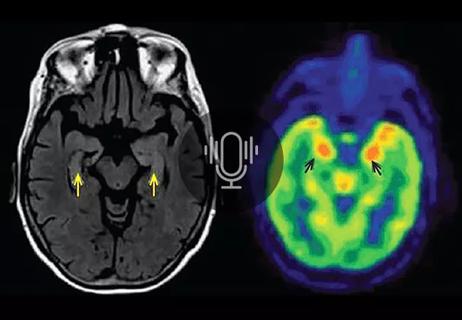New research focuses on tumorigenic aspects of communication among brain cells
Advertisement
Cleveland Clinic is a non-profit academic medical center. Advertising on our site helps support our mission. We do not endorse non-Cleveland Clinic products or services. Policy
Glioblastoma, the most common primary malignant brain tumor, typically presents late, is difficult to treat and has a poor prognosis.
“You can count on one hand the number of FDA-approved drugs for glioblastoma in the past 50 years,” says Justin Lathia, PhD, the Melvin H. Burkhardt Endowed Chair for Neuro-Oncology Clinical Research in Cleveland Clinic’s Lerner Research Institute. “The standard of care was set back in 2005. If you think about the advances in biology and biomedical science since then, progress in this field has been lagging. We are trying to close that gap.”
One of the ways Dr. Lathia’s laboratory is doing so is through exploration of the role of mitochondria transfer in glioblastoma growth. His group recently published a key investigation of this issue in Nature Cancer (as recapped in a prior Consult QD post), and this research is a major focus of a recent episode of Cleveland Clinic’s Cancer Advances podcast.
In the 21-minute episode, Dr. Lathia discusses:
Click the podcast player above to listen to the episode now, or read on for a short edited excerpt. Check out more Cancer Advances episodes at clevelandclinic.org/podcasts/cancer-advances or wherever you get your podcasts.
Advertisement
Dr. Lathia: One of the tenets of our laboratory is that we’re very interested in what we call the languages and dialects of cell communication. And I would say my background is more in developmental neurobiology and biomedical engineering. When you put those two things together, you tend to view cancer a little bit differently. It’s more than just a series of mutations. It’s more than just a ball of cells growing in the brain. It’s almost like an integrated circuit. And what we have been focusing on is trying to understand how these circuits function, because if we understand that I think it allows us to build better therapies.
Now, how did we get focused on mitochondria? There are examples where mitochondria, which are very important for cell growth and homeostasis, can actually transfer from one cell to another.
If you look in the brain at catastrophic situations like a stroke, it has been demonstrated that astrocytes — which are major support cells in the brain — seem to try to resuscitate neurons by donating whole mitochondria. This is theoretically possible, but no one has really looked at it in glioblastoma. Our laboratory’s interest in the languages and dialects of cell communication prompted us to look at this as a potential way for cells to communicate. And that is really the basis of our work in this area.
Advertisement
Advertisement

Evidence hints that chronic neuroinflammation might stem from a CNS-directed autoimmune response

Insights on leveraging collaboration and advocacy to develop and conduct needed trials

Research shows promise for use in therapeutic settings to manage depression, PTSD, anxiety and more

Comprehensive evaluation and keen clinical judgment are key in suspected cases

Advances in genomics, spinal fluid analysis, wearable-based patient monitoring and more

An update on the technology from the busiest Gamma Knife center in the Americas

Success for these complex operations requires judicious patient selection and presurgical patient optimization

A passionate specialist surveys the field’s past, present and future